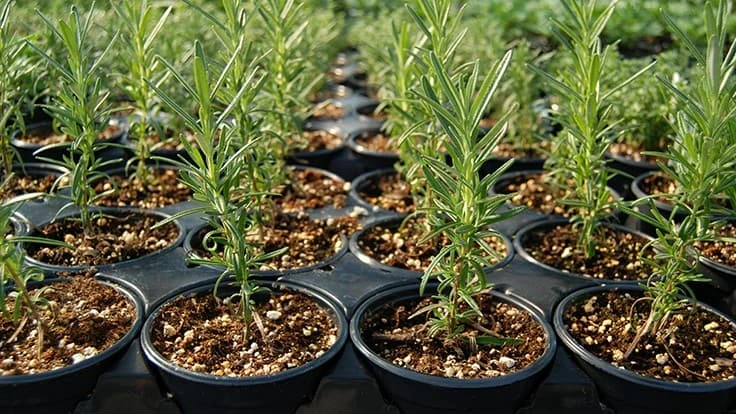
Photo: Julie Clopper, Adobe Stock
Brian Jackson, a growing media researcher at North Carolina State, spoke at Cultivate’20 Virtual, giving an presentation about growing media and its role in green industries. Here are some key takeaways.
The growing media industry is expanding rapidly.
According to Jackson, growing media suppliers are seeing higher demand than ever from growers. He said right now, there is so much demand that one of the industry’s biggest challenges is simply keeping up.
“Not just here regionally in North Carolina, but also in this country, on this continent and around the world, it’s incredible to see how much different growing systems are being used in crops that they maybe have never been used in before,” he said. “So as growing media demand increase, the demand for new product and new product types is growing at warp speed.”
According to Jackson, growing media suppliers and soilless substrate providers are releasing more new products now than they have at any point in the last few decades in an effort to keep up. The demand for soilless substrates, for instance, is expected to double by 2050. A major driver of that is growing media’s role in modern agriculture and the need for modern solutions to food security problems.
“The presence of European-based substrate companies has increased in the last three-to-five years too,” he said. “So there are a lot of European products that offer a lot of novel products now on the market. Growers have a lot to choose from. And, of course, the more growers have to choose from, the better that is.”
Why growing media is important
Jackson said that a number of food crops — including strawberries, blueberries, raspberries, blackberries and oranges — are being grown in ways they haven’t been grown before is a major driver in the growing media market. He said that this takes several different forms — be it in a controlled environment, a vertical farm or outside in containers — but all of the newer growing methods have different growing media needs than traditional growing methods.
“As populations continue to grow and populations continue to urbanize and food product continues to be shifted more closely to those urban, than a lot of emphasis will be placed on growing media and how that’s placed into food production and food security,” Jackson said.
Environmental impact
Jackson noted that the cost of transportation is one factor in growing media cost increases, but it’s not the only one. He said that limits on how far and how long drivers can be on the road drive up costs.
“It’s not just cost and distance,” he said, “but also how much they can drive. There’s a lot of transportation gridlock that all industries are facing.”
Another concern: climate change.
“We all play a role in climate change and how to mitigate it and slow it down,” he said. “We, as growers and researchers, all need to do more in the future to slow down this global crisis. It truly is that and the science proves that.”
So what does that have to do with growing media? Jackson said that, according to a United Nations checklist on how to fight climate change, use of growing media can help in three ways:
- By helping to create more sustainable food production and end hunger, particularly in remote areas of the world. “I truly think container growing can help with this,” he said.
- Carbon inputs and limiting distance of products shipped
- Clean water and sanitation
New alternatives
Jackson said he does not like using the word “replacement” since nothing can be 100% replaced. Instead, he used the word “alternative” to new introductions that give growers something different than rockwool or perlite in growing media.
For the former, he says rockwool alternatives is one of the things he is most consulted about. As for the latter, he says the adoption of wood-based products has made perlite arguably the most affected product on the market.
“There is an on-going shift in how traditional products are being used and what their place in the market is in the future,” he said.
Latest from Greenhouse Management
- 2025 Proven Winners Horticulture Scholarship applications now open
- How to improve inventory and shipping management in the greenhouse
- Leading Women of Horticulture: Anna Ball, Ball Hort, and Terri McEnaney, Bailey Nurseries
- GM CEA HERB Part 2: A guide to increasing the sowing density of culinary herbs
- GM CEA HERB Part 1: Best practices for producing culinary herbs in controlled environments
- USDA fires experts on invasive pests, including Asian citrus psyllid, chilli thrips
- CEA Alliance celebrates bipartisan introduction of Supporting Innovation in Agriculture Act
- Dümmen Orange North America celebrating 25th anniversary in 2025







